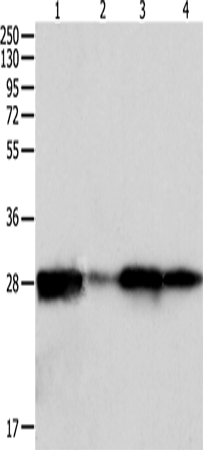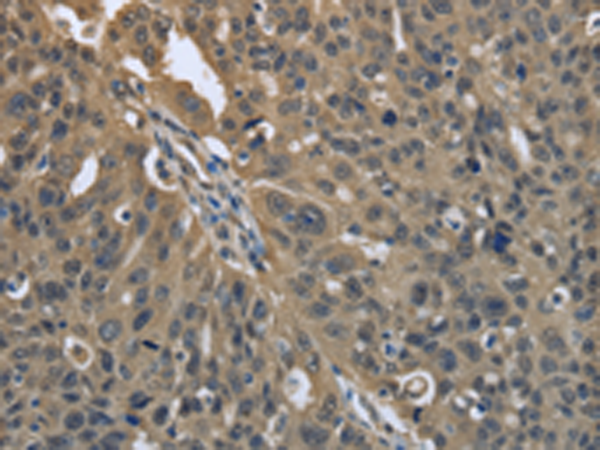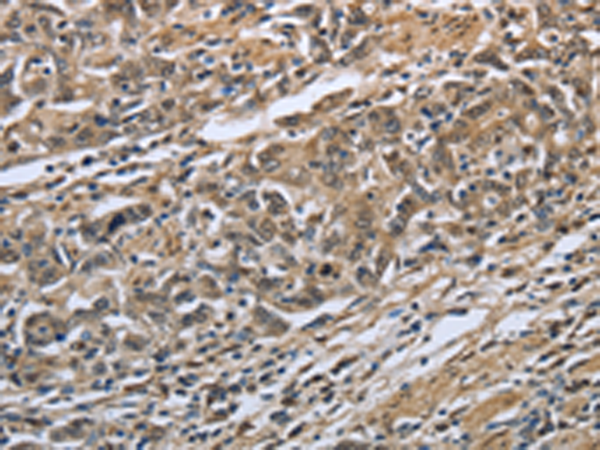


| WB | 咨询技术 | Human,Mouse,Rat |
| IF | 咨询技术 | Human,Mouse,Rat |
| IHC | 1/100-1/500 | Human,Mouse,Rat |
| ICC | 技术咨询 | Human,Mouse,Rat |
| FCM | 咨询技术 | Human,Mouse,Rat |
| Elisa | 咨询技术 | Human,Mouse,Rat |
| Aliases | PRX, p29, AOP2, 1-Cys, NSGPx, aiPLA2 |
| WB Predicted band size | 25 kDa |
| Host/Isotype | Rabbit IgG |
| Antibody Type | Primary antibody |
| Storage | Store at 4°C short term. Aliquot and store at -20°C long term. Avoid freeze/thaw cycles. |
| Species Reactivity | Human, Mouse, Rat |
| Immunogen | Fusion protein of human PRDX6 |
| Formulation | Purified antibody in PBS with 0.05% sodium azide and 50% glycerol. |
+ +
以下是关于KSR1 (N-term A7)抗体的3篇参考文献的简要概括:
---
1. **文献名称**:*KSR1 regulates Ras signaling by participating in a scaffold for the ERK cascade*
**作者**:Therrien, M., et al.
**摘要**:该研究首次揭示了KSR1作为支架蛋白在Ras-MAPK信号通路中的关键作用。作者使用针对KSR1 N端表位的特异性抗体(克隆A7),通过免疫沉淀和Western blot实验验证了KSR1与MEK和ERK的相互作用,证明其通过形成复合物增强Ras信号传导效率。
---
2. **文献名称**:*Targeting KSR1-mediated scaffolding function impairs oncogenic Ras signaling*
**作者**:McCarthy, C., et al.
**摘要**:研究探讨了KSR1在肿瘤细胞中的功能,利用N-term A7抗体检测KSR1在多种癌细胞系中的表达水平。实验表明,抑制KSR1的支架功能可阻断MAPK通路激活,并减缓肿瘤生长,为靶向KSR1的癌症治疗提供了依据。
---
3. **文献名称**:*Characterization of KSR1 knockout mice reveals compensatory mechanisms in MAPK signaling*
**作者**:Lozano, J., et al.
**摘要**:通过构建KSR1基因敲除小鼠模型,研究KSR1缺失对发育和MAPK通路的影响。N-term A7抗体被用于组织样本的免疫组化分析,结果显示KSR1缺失导致其他支架蛋白(如KSR2)代偿性上调,维持基础信号传导。
---
**备注**:若需具体文献来源(期刊、年份等),建议通过PubMed或抗体供应商(如CST、Abcam)的产品引用列表进一步检索。部分研究可能未明确标注“A7”克隆号,需结合实验方法中的抗体描述确认。
×